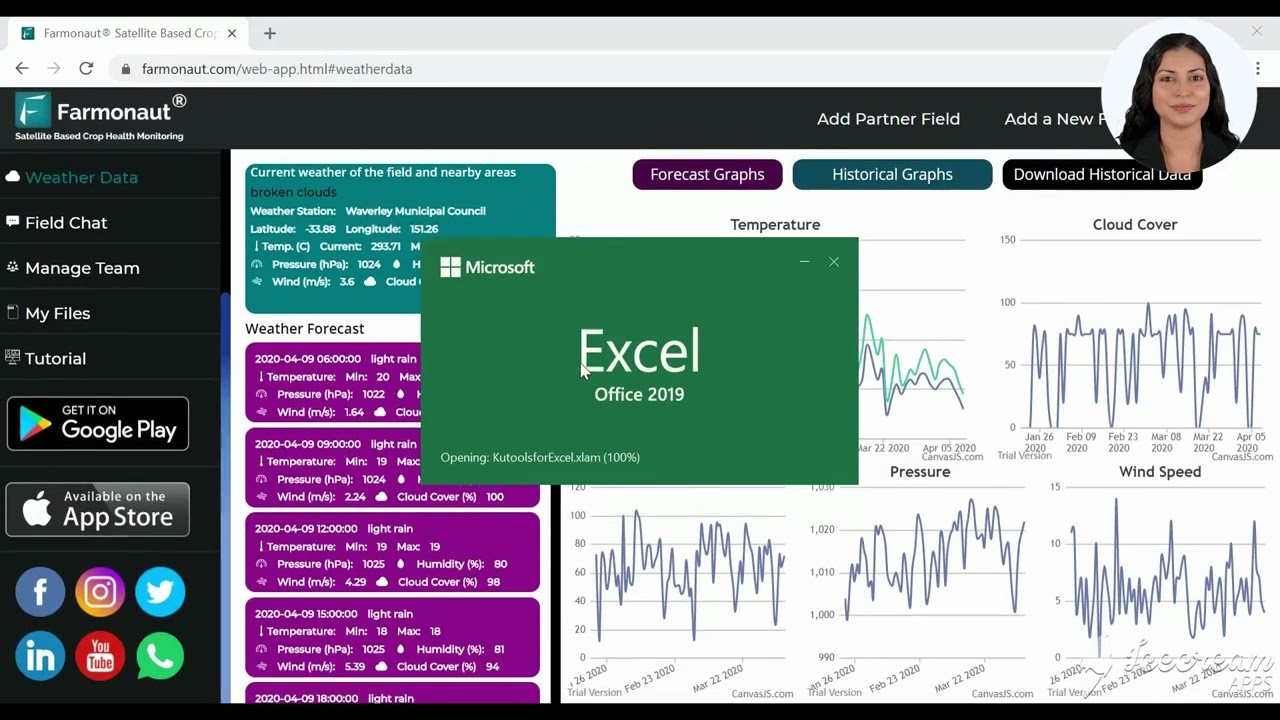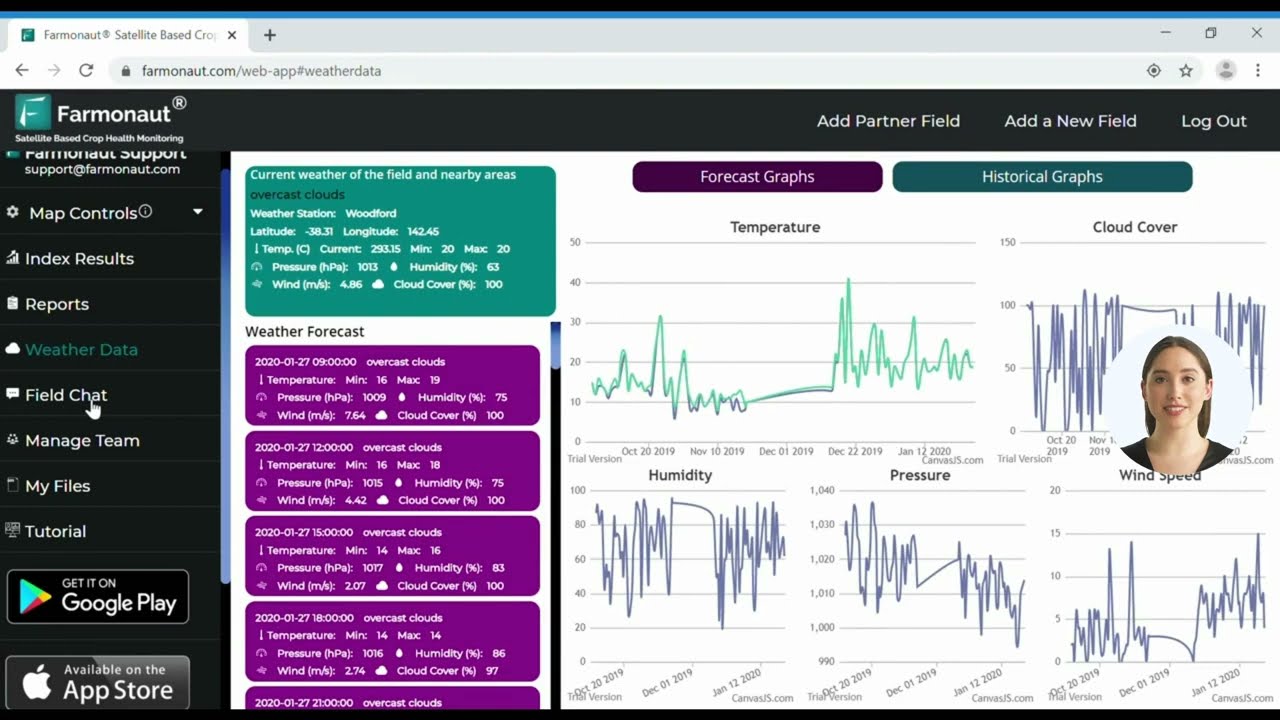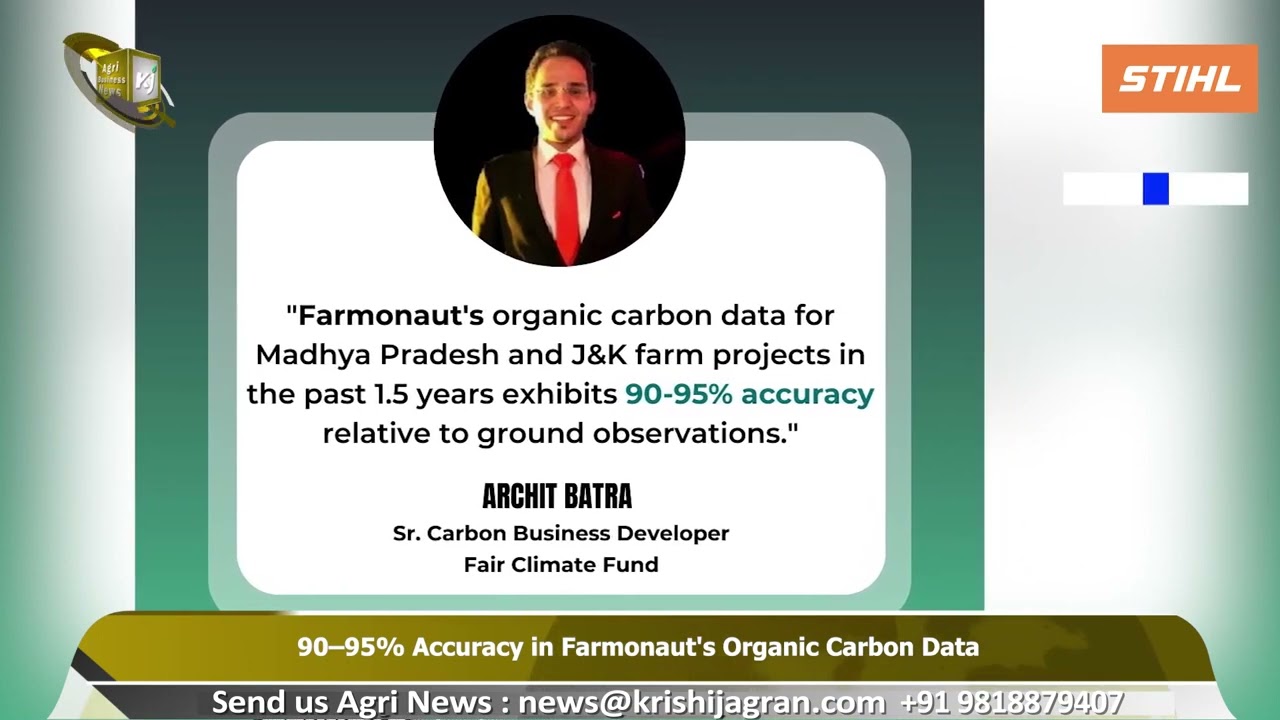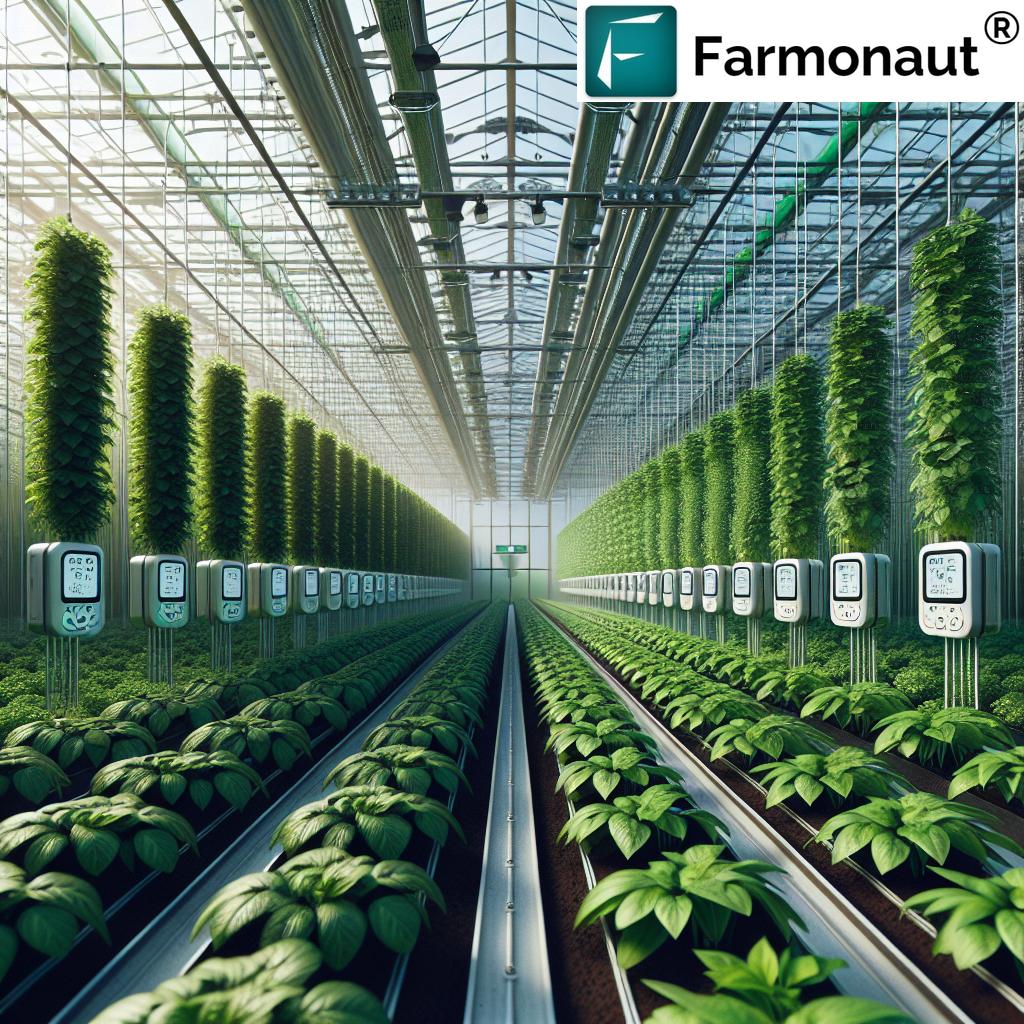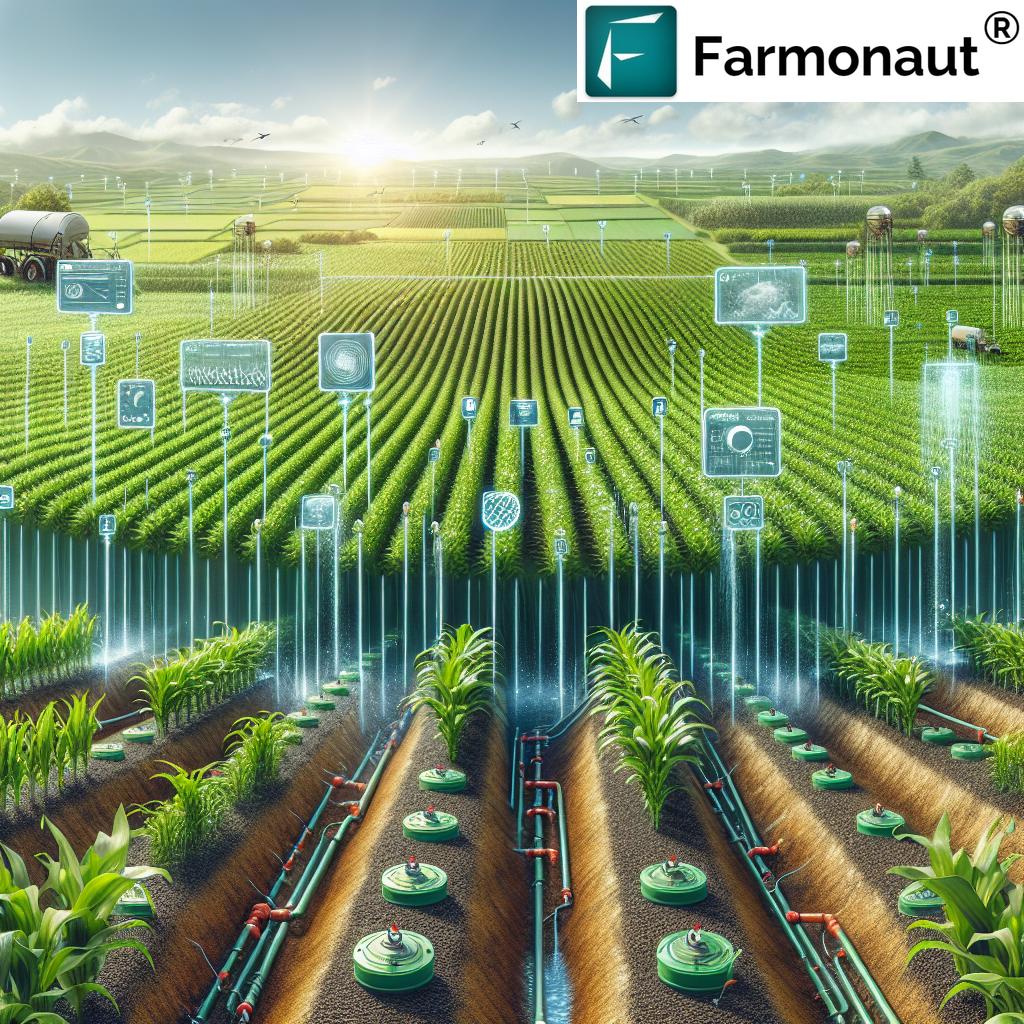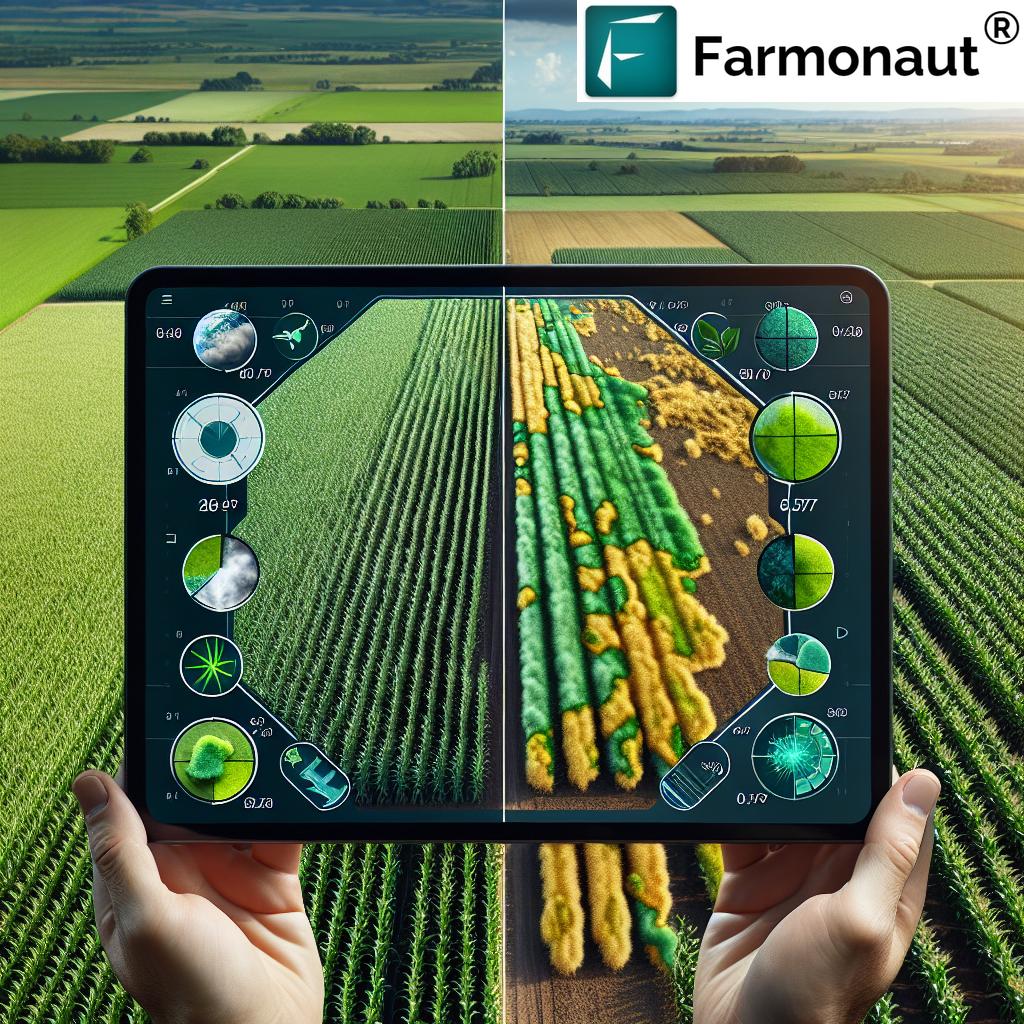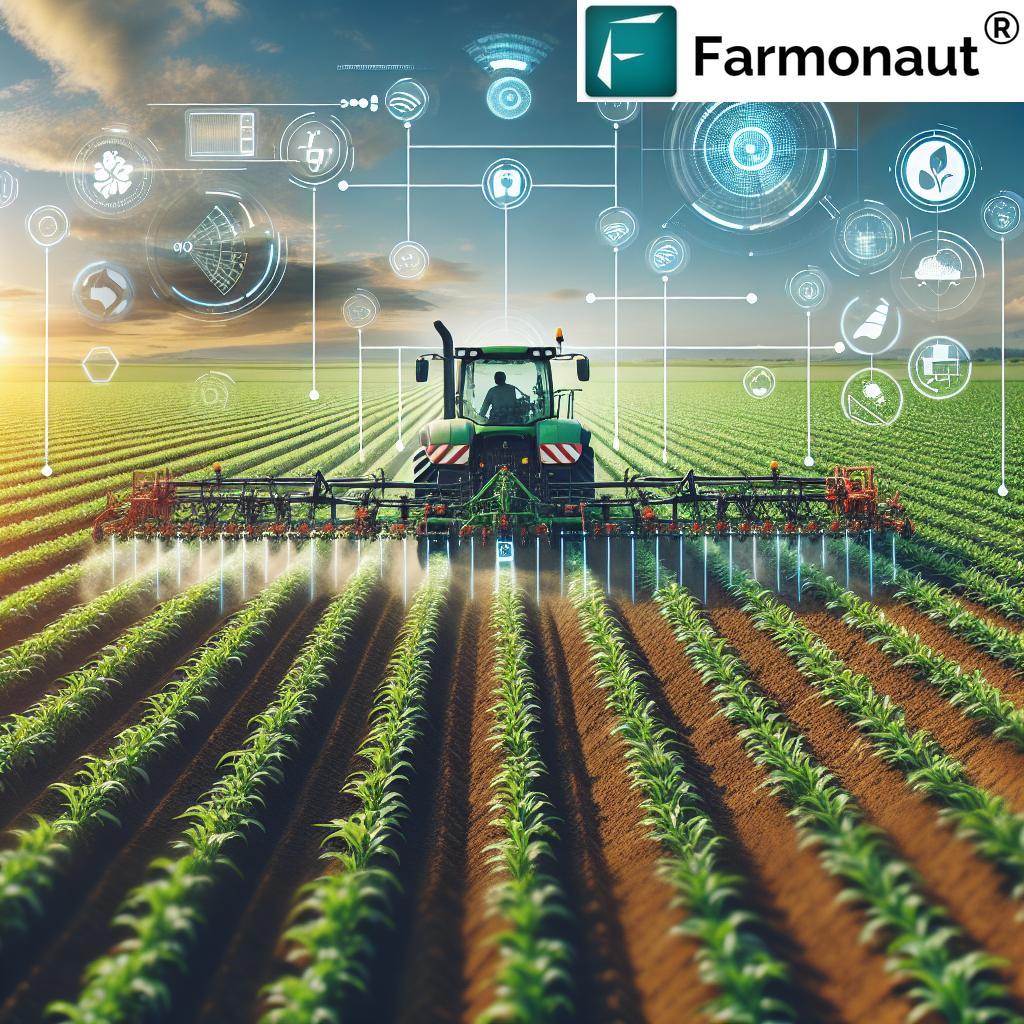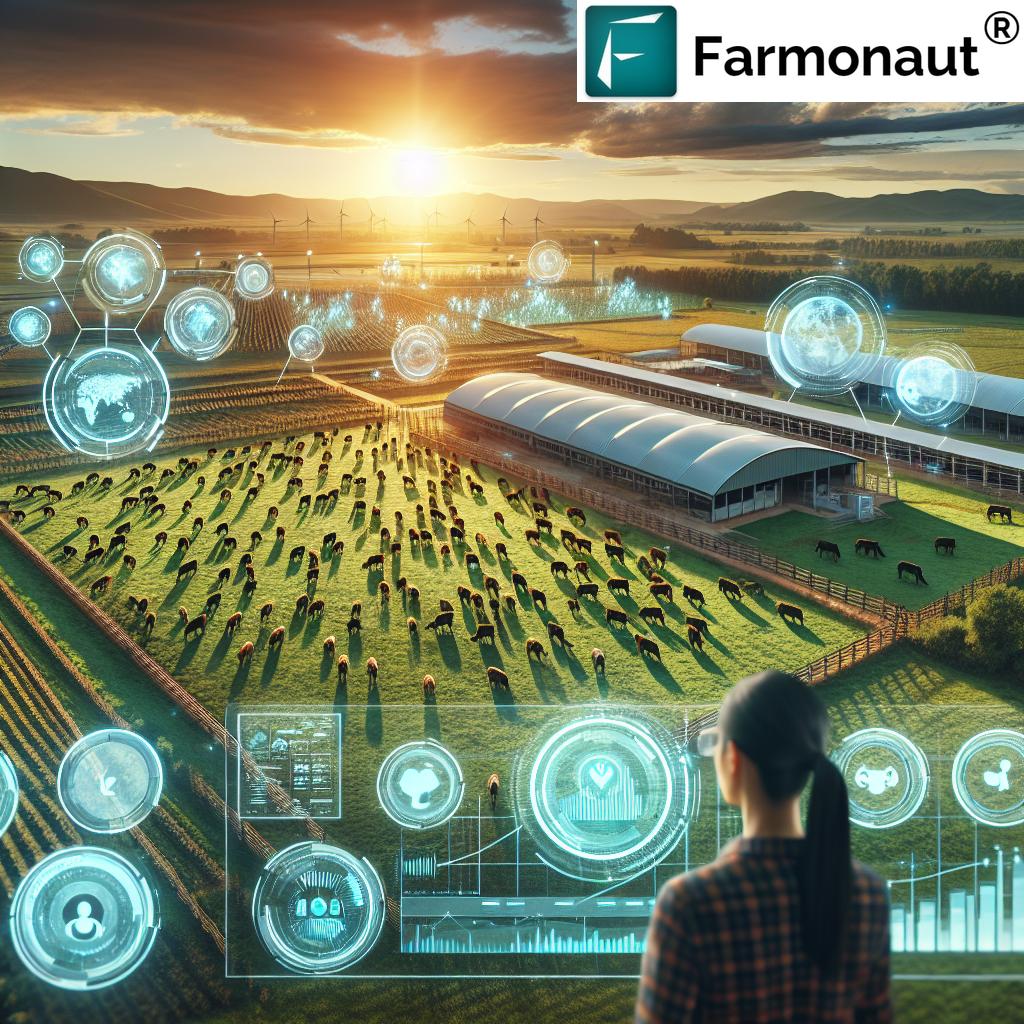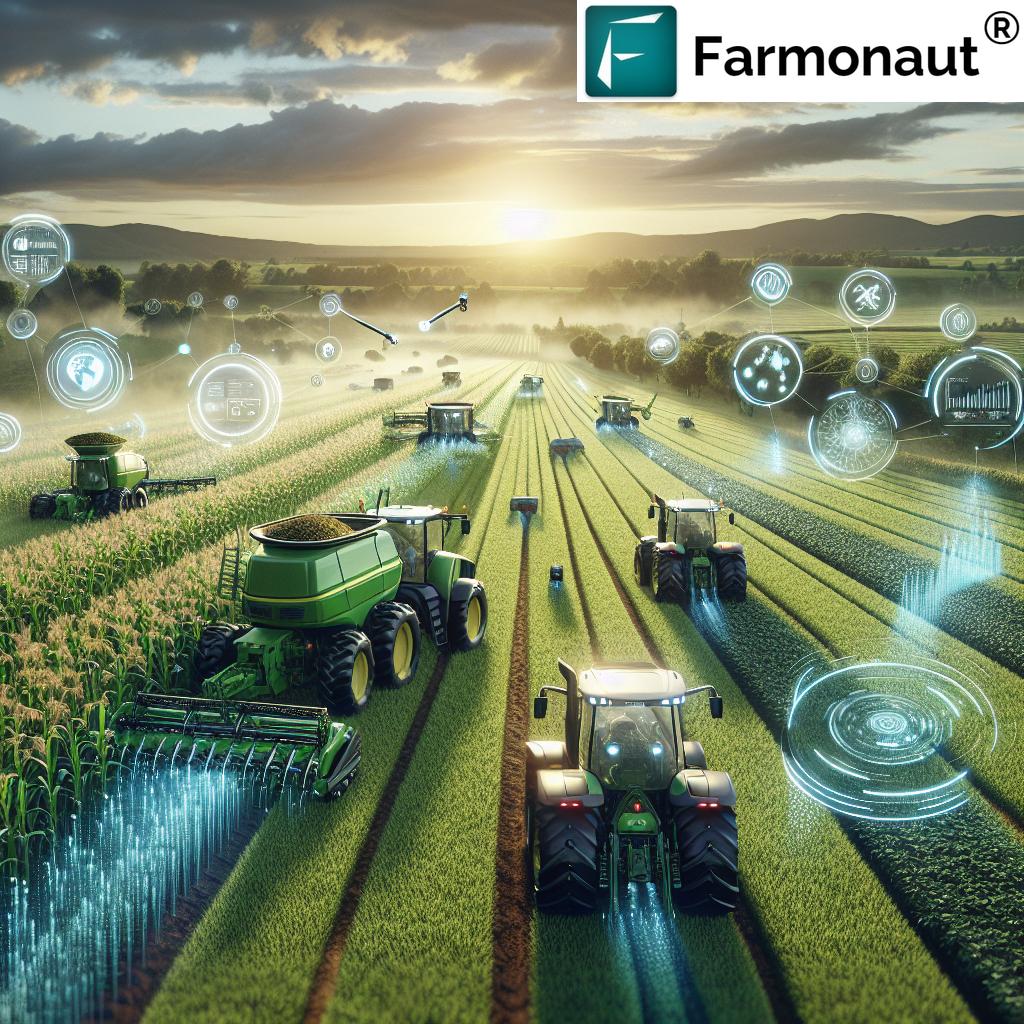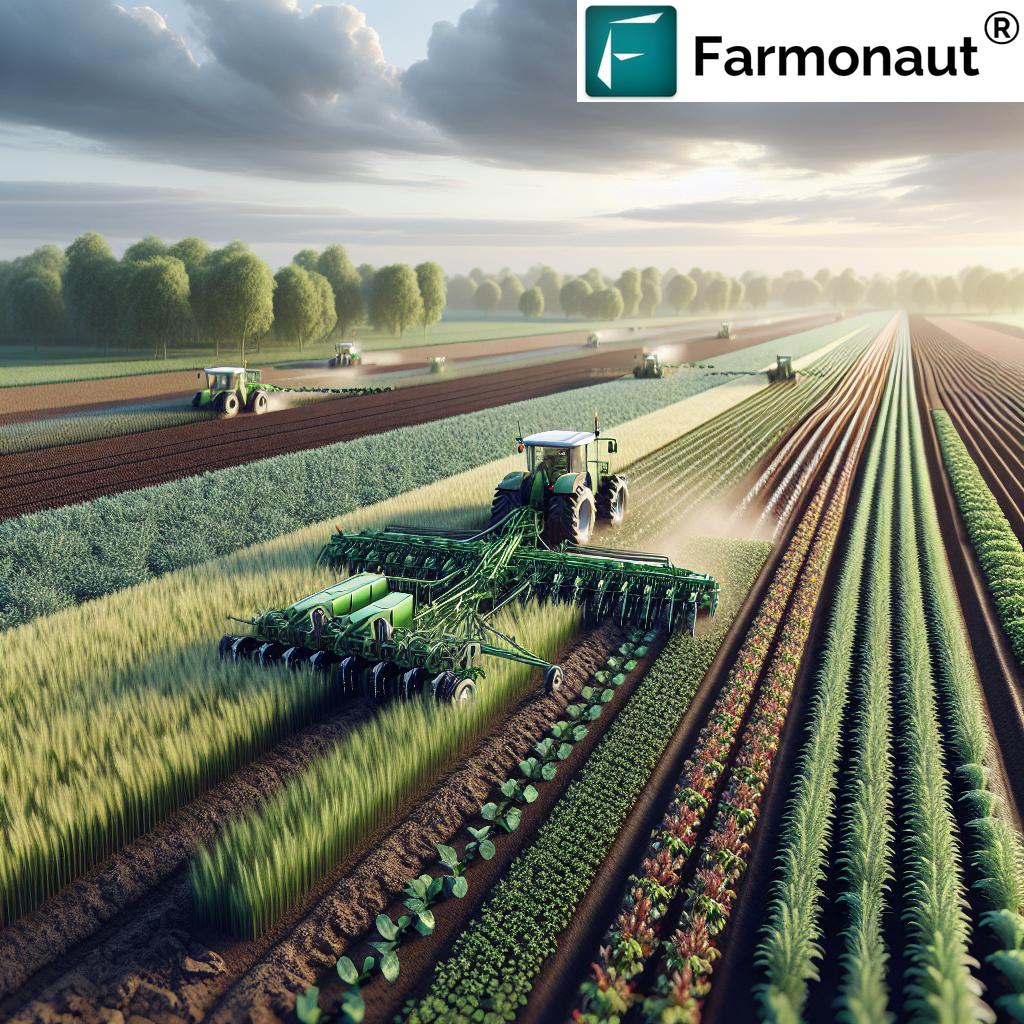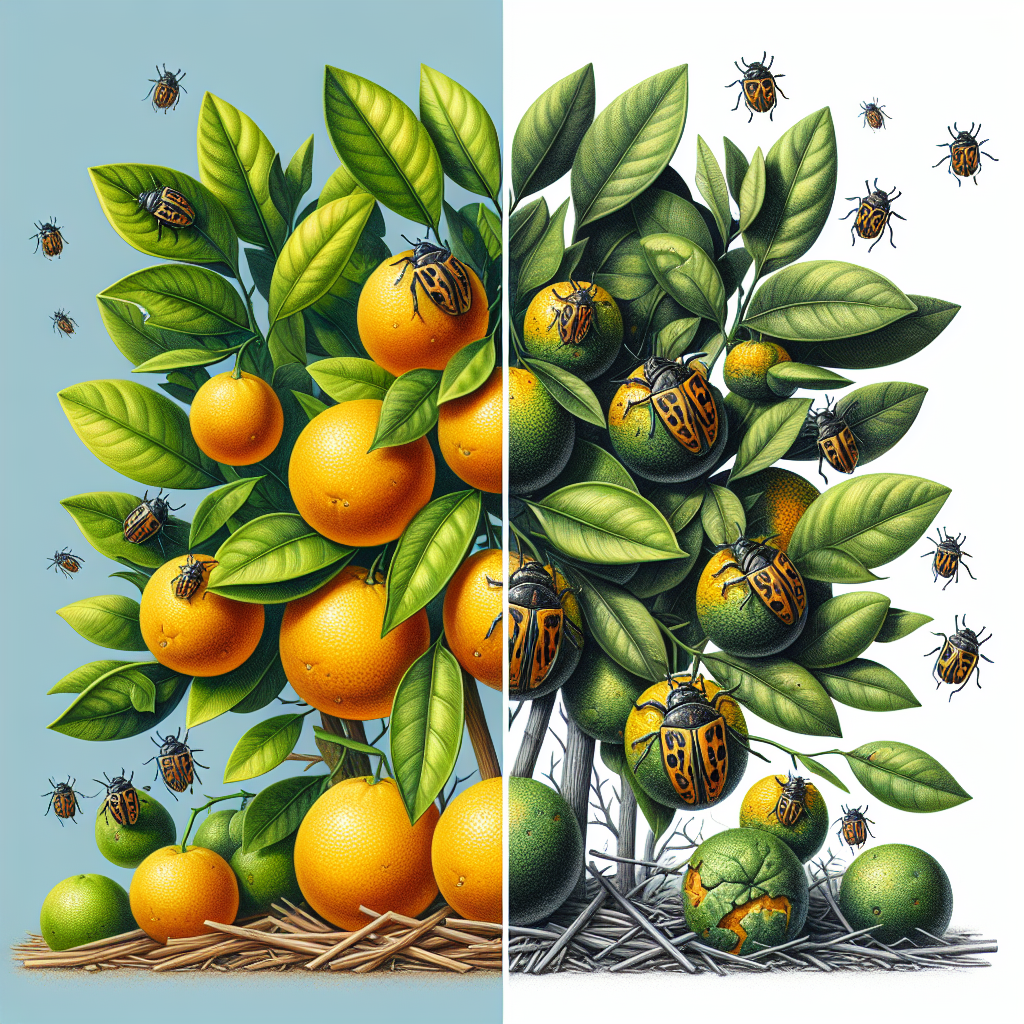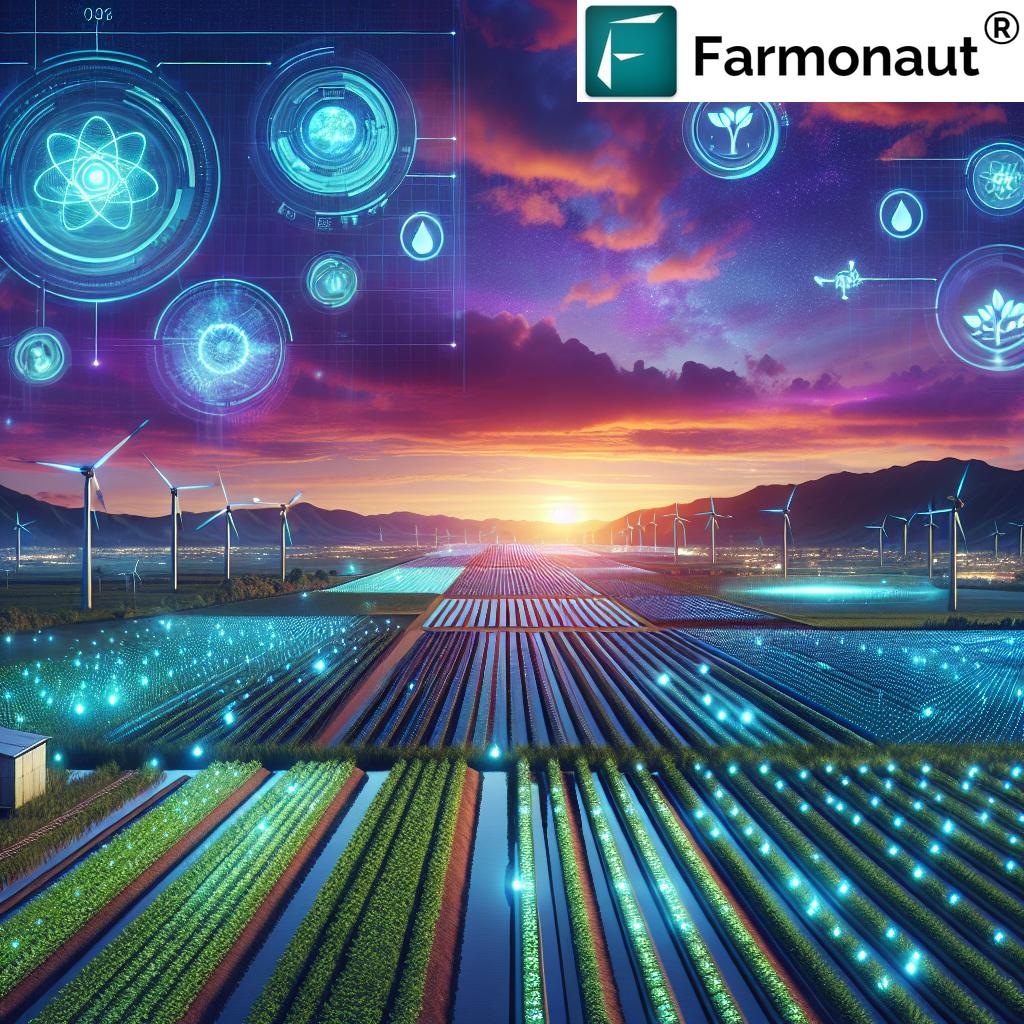Revolutionizing Agriculture: How Drone Technology and AI Are Transforming Global Farming Practices
“The commercial drone market is projected to grow from $5.32 billion in 2024 to $9.34 billion by 2030.”
In the ever-evolving landscape of agriculture, we are witnessing a technological revolution that is reshaping the way we approach farming on a global scale. At the forefront of this transformation are drones and artificial intelligence (AI), two cutting-edge technologies that are synergizing to create unprecedented opportunities for efficiency, sustainability, and productivity in the agricultural sector.
As leaders in agricultural technology, we at Farmonaut recognize the immense potential of these innovations to address some of the most pressing challenges facing modern agriculture. In this comprehensive exploration, we’ll delve into how drone technology and AI are not just changing, but revolutionizing farming practices around the world.
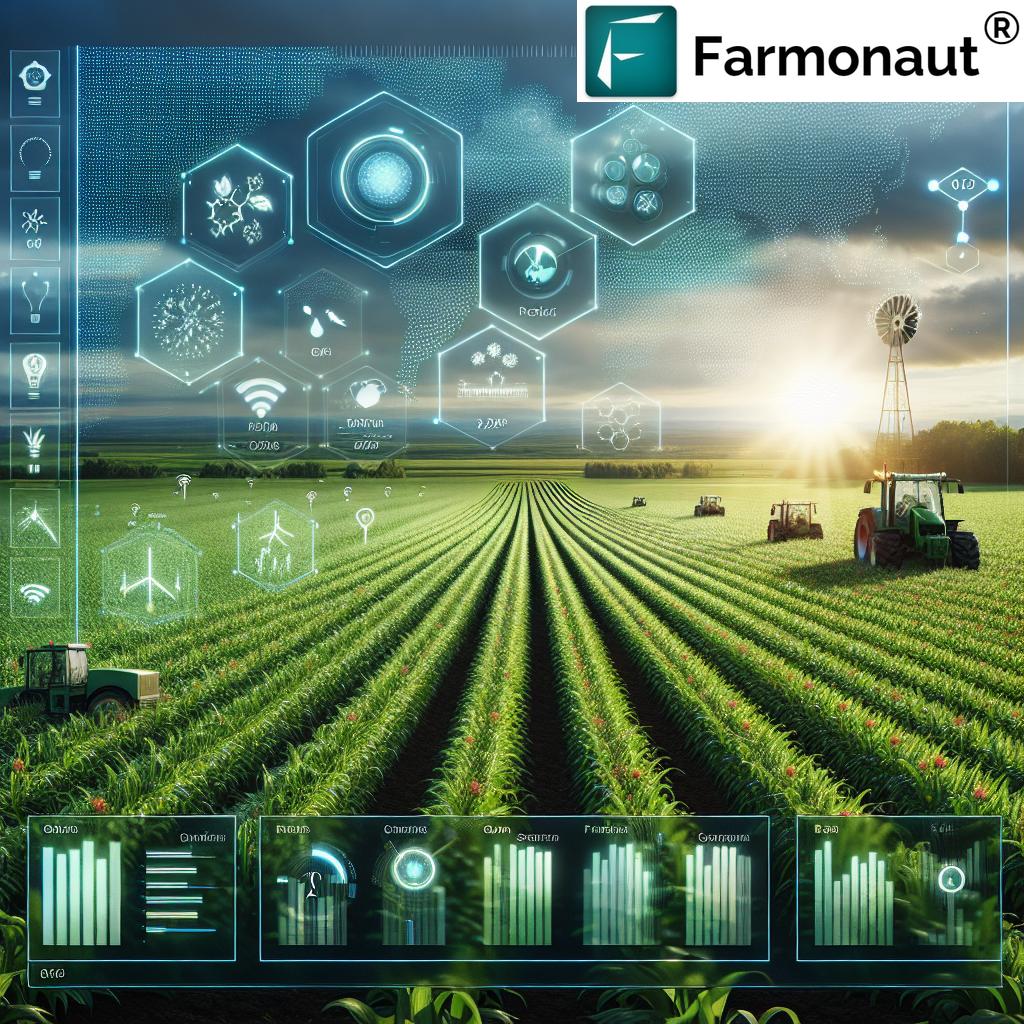
The Rise of Commercial Drones in Agriculture
The commercial drone market is experiencing explosive growth, with projections indicating a rise from $5.32 billion in 2024 to an impressive $9.34 billion by 2030. This remarkable expansion is driven by the diverse applications of drone technology across various industries, with agriculture standing out as a prime beneficiary.
In the agricultural sector, drones are rapidly becoming indispensable tools for:
- Crop health monitoring
- Precision spraying of pesticides and fertilizers
- Soil and field analysis
- Irrigation management
- Livestock monitoring
The integration of drones into farming practices is not just a trend; it’s a paradigm shift that’s redefining the very essence of precision agriculture.
AI-Driven Drone Technology: A Game-Changer for Farmers
The true power of drones in agriculture is unleashed when combined with artificial intelligence. AI algorithms can process and analyze vast amounts of data collected by drones, providing farmers with actionable insights that were previously unattainable.
Here’s how AI-driven drone technology is transforming farming:
- Enhanced Crop Monitoring: AI algorithms can detect early signs of crop diseases, pest infestations, or nutrient deficiencies by analyzing multispectral imagery captured by drones.
- Precise Resource Application: By creating detailed maps of soil conditions and crop health, AI can guide the precise application of water, fertilizers, and pesticides, reducing waste and environmental impact.
- Yield Prediction: Machine learning models can predict crop yields with increasing accuracy, helping farmers make informed decisions about harvesting and market planning.
- Automated Farming Operations: AI-powered drones can perform tasks such as planting seeds, pollinating crops, and even harvesting, reducing labor costs and increasing efficiency.
At Farmonaut, we’re at the forefront of integrating these technologies into our satellite-based farm management solutions. Our platform leverages AI to analyze satellite imagery, providing farmers with real-time insights into crop health, soil moisture levels, and other critical metrics.
Drone Applications Beyond Crop Monitoring
While crop monitoring remains a primary application, drones are proving invaluable in other aspects of agriculture and related industries:
Infrastructure Inspection
Drones equipped with high-resolution cameras and thermal imaging sensors are revolutionizing the inspection of agricultural infrastructure. From assessing the condition of irrigation systems to evaluating the structural integrity of silos and barns, drones provide a safe and efficient means of conducting comprehensive inspections.
Livestock Management
For livestock farmers, drones offer a bird’s-eye view of herds, helping to track animal movements, detect signs of illness, and even assist in herding. This technology is particularly useful in vast rangelands where traditional monitoring methods are time-consuming and labor-intensive.
Precision Forestry
In the forestry sector, drones are being used for tree counting, species identification, and monitoring forest health. This application is crucial for sustainable forest management and early detection of issues like pest infestations or wildfires.
“Drones are revolutionizing operations across diverse industries, including infrastructure inspection, medical supply delivery, and disaster response.”
The Global Impact of Drone Technology in Agriculture
The adoption of drone technology in agriculture is not limited to developed countries. In fact, it’s having a profound impact on farming practices in developing nations, where it’s helping to address critical challenges:
- Food Security: By improving crop yields and reducing losses, drones are contributing to enhanced food security in regions prone to shortages.
- Resource Conservation: Precision agriculture enabled by drones helps conserve water and reduce chemical usage, crucial in areas facing resource scarcity.
- Climate Resilience: The data gathered by drones aids in developing more resilient farming strategies in the face of climate change.
At Farmonaut, we’re committed to making these technologies accessible to farmers worldwide, regardless of the scale of their operations. Our platform democratizes access to precision agriculture, offering affordable services for real-time crop monitoring and farm management.
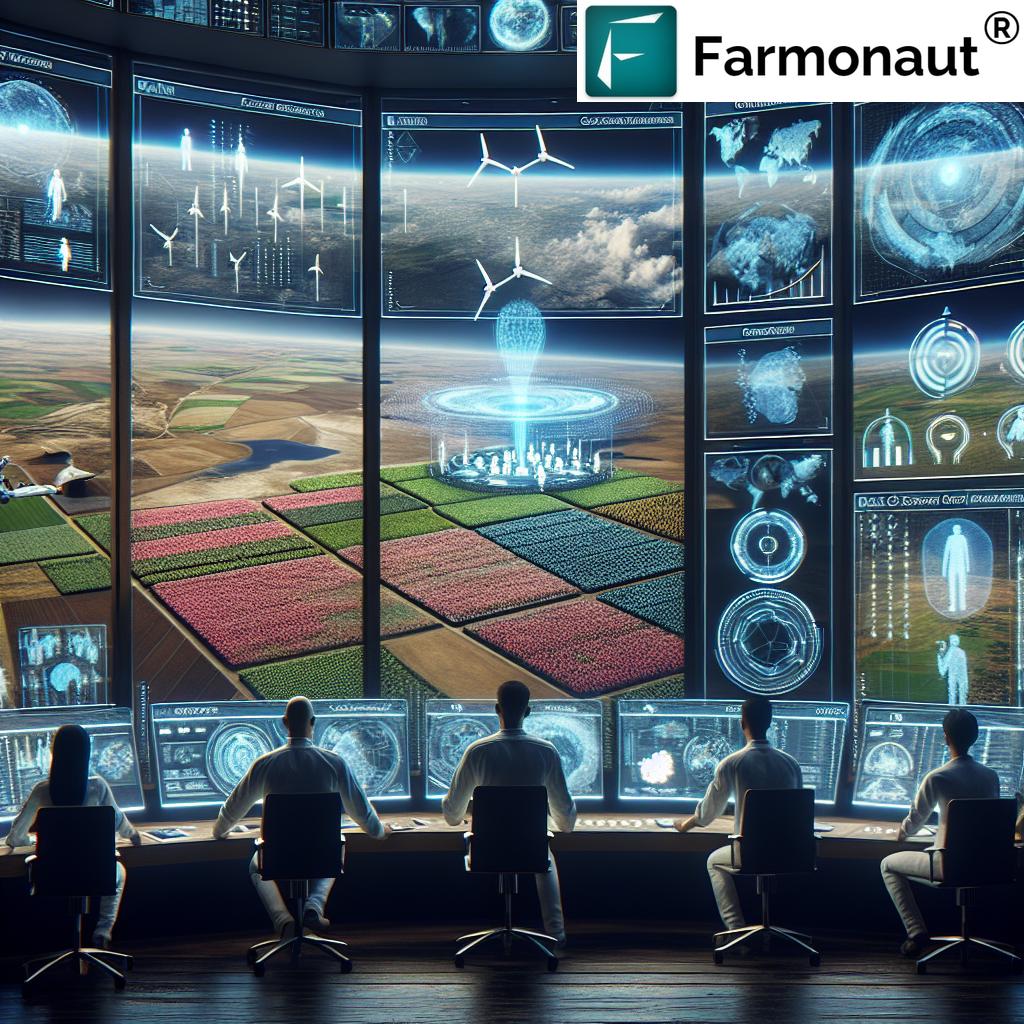
Overcoming Challenges in Drone Adoption
While the benefits of drone technology in agriculture are clear, there are challenges that need to be addressed for widespread adoption:
Regulatory Hurdles
The use of drones in agriculture is subject to various regulations that differ from country to country. Navigating these regulatory landscapes can be complex for farmers and agribusinesses.
Data Management and Analysis
The vast amount of data collected by drones can be overwhelming. Effective data management and analysis tools are crucial for deriving actionable insights.
Initial Investment Costs
While the long-term benefits are significant, the initial cost of acquiring drone technology can be a barrier for some farmers, particularly in developing regions.
Technical Expertise
Operating drones and interpreting the data they collect requires a certain level of technical expertise, which may necessitate training and education for farmers and agricultural workers.
At Farmonaut, we’re addressing these challenges by offering user-friendly platforms that simplify data interpretation and by providing educational resources to help farmers make the most of our technology.
The Future of Drones in Agriculture
As we look to the future, the potential for drones in agriculture continues to expand. Here are some exciting developments on the horizon:
Swarm Technology
The concept of drone swarms, where multiple drones work together autonomously, could revolutionize large-scale farming operations, allowing for faster and more comprehensive data collection and task execution.
Integration with IoT and 5G
The integration of drones with Internet of Things (IoT) sensors and 5G networks will enable real-time data transmission and processing, further enhancing the precision and responsiveness of farming operations.
Advanced AI and Machine Learning
Continued advancements in AI and machine learning will lead to even more sophisticated analysis of drone-collected data, providing farmers with increasingly accurate and predictive insights.
Autonomous Farming Systems
The ultimate goal is the development of fully autonomous farming systems, where drones work in concert with ground-based robots to manage entire agricultural operations with minimal human intervention.
At Farmonaut, we’re continuously innovating to stay at the forefront of these technological advancements, ensuring that our satellite-based solutions integrate seamlessly with emerging drone technologies.
| Year | Market Value (Billion USD) | Key Industries | Notable Applications |
|---|---|---|---|
| 2024 | $5.32 | Agriculture, Infrastructure | Crop monitoring, Tower inspections |
| 2026 | $6.98 | Healthcare, Energy | Medical deliveries, Solar panel assessment |
| 2028 | $8.15 | Logistics, Security | Last-mile delivery, Border surveillance |
| 2030 | $9.34 | Disaster Management, Telecommunications | Emergency response, Network optimization |
The Role of Farmonaut in the Agricultural Drone Revolution
As pioneers in agricultural technology, we at Farmonaut are playing a crucial role in the integration of drone technology and AI into farming practices. Our satellite-based farm management solutions complement and enhance the capabilities of drones in several ways:
- Comprehensive Data Integration: Our platform integrates satellite imagery with drone-collected data, providing farmers with a holistic view of their operations.
- AI-Powered Analytics: Our Jeevn AI Advisory System analyzes data from multiple sources, including drones, to deliver personalized farm management advice.
- Accessibility: By offering our services through web and mobile apps, we ensure that farmers can access crucial data and insights anytime, anywhere.
- Scalability: Our solutions are designed to scale, catering to individual farmers as well as large agribusinesses leveraging drone technology.
We invite you to explore how Farmonaut can complement your use of drone technology and revolutionize your farming practices:
For developers interested in integrating our satellite and weather data into their own systems, we offer robust API solutions. Learn more about our API and access our API Developer Docs.
The Broader Impact of Drone Technology
While our focus at Farmonaut is on agricultural applications, it’s important to recognize the broader impact of drone technology across various sectors:
Medical Supply Delivery
Drones are revolutionizing healthcare access in remote areas by delivering critical medical supplies, including blood and vaccines, to hard-to-reach locations.
Disaster Response
In disaster scenarios, drones play a crucial role in assessing damage, locating survivors, and delivering emergency supplies, significantly enhancing the effectiveness of response efforts.
Environmental Conservation
Drones are being used to monitor wildlife populations, track deforestation, and even plant trees in reforestation efforts, contributing to global conservation initiatives.
Urban Planning and Development
In urban environments, drones assist in infrastructure inspection, traffic monitoring, and 3D mapping for city planning and development projects.
These diverse applications underscore the transformative potential of drone technology across multiple sectors, highlighting its role in addressing complex global challenges.
Regulatory Landscape and Safety Considerations
As drone technology continues to advance, regulatory bodies around the world are working to create frameworks that ensure safe and responsible drone usage while fostering innovation. Key considerations include:
- Airspace Management: Developing systems to integrate drones into existing airspace safely.
- Privacy Concerns: Establishing guidelines to protect individual privacy rights in drone operations.
- Licensing and Registration: Implementing standardized processes for drone operator licensing and vehicle registration.
- Safety Standards: Developing and enforcing safety standards for drone manufacturing and operation.
At Farmonaut, we stay abreast of these regulatory developments to ensure our solutions align with the latest guidelines and best practices in drone technology integration.
The Economic Impact of Drone Technology in Agriculture
The adoption of drone technology in agriculture is not just a technological advancement; it’s an economic game-changer. Here’s how drones are impacting the agricultural economy:
- Cost Reduction: By optimizing resource use and reducing labor costs, drones help farmers significantly lower their operational expenses.
- Yield Increase: Precision agriculture enabled by drones can lead to substantial increases in crop yields, boosting farm profitability.
- New Job Creation: The drone industry is creating new job opportunities in areas such as drone piloting, data analysis, and agricultural technology.
- Market Expansion: Drones are opening up new markets for agricultural services and products, driving innovation in the sector.
At Farmonaut, we’re committed to helping farmers harness these economic benefits through our advanced satellite-based solutions that complement drone technology.
Sustainability and Environmental Impact
One of the most significant advantages of drone technology in agriculture is its potential to promote sustainability and reduce environmental impact:
- Reduced Chemical Usage: Precision application of pesticides and fertilizers minimizes chemical runoff and soil contamination.
- Water Conservation: Drone-assisted irrigation management helps conserve water resources.
- Soil Health: By enabling more precise land management, drones help preserve soil health and reduce erosion.
- Carbon Footprint Reduction: Optimized farming practices facilitated by drones can lead to reduced carbon emissions from agricultural operations.
Our Farmonaut platform includes features for carbon footprint tracking, helping agribusinesses monitor and reduce their environmental impact in line with these sustainability goals.
The Future of Farming: A Synergy of Technologies
As we look to the future, it’s clear that the revolution in agriculture will be driven by the synergy of multiple technologies, with drones and AI at the forefront. This technological convergence will include:
- Blockchain for Traceability: Combining drone data with blockchain technology for enhanced supply chain transparency.
- Edge Computing: Enabling real-time data processing on drones for faster decision-making.
- Quantum Sensors: Integrating quantum technology for ultra-precise measurements in agricultural applications.
- Vertical Farming Integration: Using drones for monitoring and managing vertical farming operations in urban environments.
At Farmonaut, we’re continuously evolving our platform to integrate these emerging technologies, ensuring that farmers have access to the most advanced tools for precision agriculture.
Conclusion: Embracing the Drone Revolution in Agriculture
The integration of drone technology and AI in agriculture represents a pivotal moment in the history of farming. As we’ve explored throughout this article, these technologies are not just improving existing practices; they’re fundamentally transforming how we approach food production, resource management, and environmental stewardship in agriculture.
At Farmonaut, we’re proud to be at the forefront of this agricultural revolution, providing farmers with the tools and insights they need to thrive in this new era of precision farming. By combining our satellite-based technologies with the power of drones and AI, we’re helping to create a more efficient, sustainable, and productive agricultural sector.
As we move forward, the potential for innovation and improvement in agriculture seems limitless. From small family farms to large-scale agricultural operations, the benefits of drone technology and AI are accessible to all, promising a future where farming is more precise, productive, and in harmony with our environment.
We invite you to join us in this exciting journey towards the future of agriculture. Explore our solutions, leverage our technologies, and be part of the revolution that’s shaping the future of farming around the globe.
FAQ Section
Q: How are drones changing agriculture?
A: Drones are revolutionizing agriculture by enabling precision farming techniques, including crop monitoring, targeted spraying of pesticides and fertilizers, soil analysis, and irrigation management. They provide farmers with real-time data and insights, leading to more efficient resource use and increased crop yields.
Q: What are the main benefits of using drones in farming?
A: The main benefits include improved crop health monitoring, reduced chemical usage, water conservation, increased yields, lower operational costs, and more sustainable farming practices. Drones also enable faster and more accurate data collection compared to traditional methods.
Q: How does AI complement drone technology in agriculture?
A: AI processes and analyzes the vast amounts of data collected by drones, providing actionable insights to farmers. This includes early detection of crop diseases, precise resource application recommendations, yield predictions, and automated farming operations.
Q: Are drones cost-effective for small-scale farmers?
A: While there may be initial investment costs, drones can be cost-effective even for small-scale farmers. They can significantly reduce resource waste, improve crop yields, and save time on manual inspections. Many companies, including Farmonaut, offer affordable drone-complementary solutions for farms of all sizes.
Q: What regulatory considerations should farmers be aware of when using drones?
A: Farmers should be aware of local airspace regulations, privacy laws, and any specific agricultural drone use guidelines in their region. It’s important to obtain necessary licenses or permits and follow safety protocols. Regulations vary by country, so it’s crucial to stay informed about local requirements.
Q: How does Farmonaut’s technology complement drone use in agriculture?
A: Farmonaut’s satellite-based farm management solutions integrate seamlessly with drone technology. Our platform analyzes data from multiple sources, including drones and satellites, to provide comprehensive insights into crop health, soil conditions, and overall farm management. This synergy enhances the effectiveness of precision agriculture practices.
Earn With Farmonaut
Earn 20% recurring commission with Farmonaut’s affiliate program by sharing your promo code and helping farmers save 10%. Onboard 10 Elite farmers monthly to earn a minimum of $148,000 annually—start now and grow your income!
Farmonaut Subscriptions



